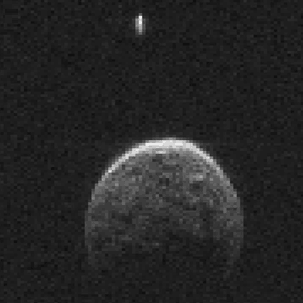A study on galactic morphology and evolution
-
There's something about Galaxy Zoo that draws me in in a way that the other projects don't- something that keeps all of us here. For me, that is the morphology of galaxies. All of these galaxies have diverse and unpredictable morphologies that are both a curse and a gift. As a result, in all my time here I've looked for the subtle differences between these galaxies, looking for things that previous studies have overlooked.
Morphological summaries
First, I want to show the individual galaxy morphologies there are. Looking at the edge of the visible universe, billions of years ago, you will find mostly irregular/disturbed galaxies. These protogalaxies are more most prominent in Hubble images, available as GZ IDs AGZ0000001 to AGZ000146h (IDs in base 36)
Eventually as these galaxies merge with other galaxies, together building to make gigantic galaxies, they turn into Spiral galaxies. As these galaxies develop, the more massive stars near the core (explained further below) turn into black holes, which merge into the central supermassive black hole (SmBH). As the SmBH gains mass, the stars closest to it become tidally locked, forming a bar.
As the Barred Spiral continues thousands more rotations, the hydrogen gas inside of it is slowly converted to helium, and the remaining nebulae within dim and fade out completely. As the galaxy's stars begin to be put on more eccentric orbits through the galaxy's halo, the galaxy transitions into a lenticular galaxy. The stars would have slowly pulled on the rotating black hole, slowing its rotation to a near stand-still. As more and more of the remaining stars get flung on random orbits through the galaxy, its original disk becomes unrecognizable and indistinguishable from the rest of the galaxy. It is now an elliptical.
However, the path is not linear. Another commonly-noticed galaxy is a ring galaxy. These can form through a number of processes. True ring galaxies, with no center, are formed when two galaxies fly by one another. The to-be-ring galaxy is speared through by the other galaxy, taking out its core and leaving only a circular ring behind. However these quickly coalesce back into an irregular galaxy under their own gravity. A much more common type is steering wheel galaxies, or ring galaxies with a bar. They are occasionally mistaken as barred spirals, and essentially are. Some Barred Spiral galaxies have a bar large enough that the non-tidally-locked arms only complete about half a revolution around the galaxy before dissipating. These arms will sometimes join with one another, creating a uniform ring around them. A third identified type of ring galaxy are figure-8 galaxies. These are just galaxies with non-circular bars, that instead of joining with the start of the other arm, join at the nucleus instead. Spiral galaxies often form into these, rather than steering-wheel rings.
You will occasionally see rings within barred spirals, such as AGZ00031nh . The process to create this is essentially the same as the above mentioned one, except with the inner arms instead of outer.
Dust lanes
A feature often noted in Barred Spirals and Lenticular galaxies is dust lanes. They are clouds of neutral hydrogen (HI) stretched into arms by the rotation of the central SmBH. As the stars in the arms go nova and supernova, the dust lanes collapse to form new arms, and the cycle continues. In late-type galaxies, like ellipticals and Lenticulars, the HI falls into the remaining stars, somewhat adding to their mass.
stellar spectral type shift towards the core
The centers of early galaxies are full of massive stars, as the extreme gravity of the SmBH and surrounding stars causes the gas clouds closer to the core to condense faster and larger, creating larger stars (O/B/A-type) which in turn go supernova faster, creating black holes that further the mass of the central SmBH. Further star formation is slowed down as the wind from the now-gigantic SmBH blows away all remaining hydrogen, leaving only K/M-type stars.
This place will be my notepad for anything interesting about galactic morphology that I see; there are some things I'd like to highlight but are best presented in a separate post. Either way, enjoy!
Posted
-
 by
ElisabethB
moderator
by
ElisabethB
moderator
A couple of remarks of the top of my head :
Eventually as these galaxies merge with other galaxies, together building to make gigantic galaxies, they turn into Spiral galaxies
I thought that as galaxies merged, they'd become ellipticals.
As the SmBH gains mass, the stars closest to it become tidally locked, forming a bar
The stars in a bar are not tidally locked. They are like the cars in a congestion on a highway. The congestion stays but the cars in it are not the same.
So, that is two big mistakes in the first half of your post. maybe you should go and read up on these things again !
And there are a couple of other weird ideas that I haven't even touched upon !
Happy learning ! 😄
Posted
-
 by
Capella05
moderator
by
Capella05
moderator
Moving this to the 'Citizen Science' board.
Posted
-
I want to say that this post here is simply my conclusion of what I see on GZ, not based on any other data. As a result, some (lots) of things are bound to be wrong.
When large spiral galaxies merge, they eventually become ellipticals, but dwarf galaxies that merge eventually merge together into spirals.
I meant about the tidal locking that instead of moving freely around the galaxy at their own speed, that they are rotating around the center at the same rate as the SmBH. They can move freely around on their own, but generally move at the same speed.
Posted
-
 by
ElisabethB
moderator
by
ElisabethB
moderator
So, why make this a new thread ?
Posted
-
 by
Capella05
moderator
by
Capella05
moderator
Merged into the original thread.
@planetaryscience, by your own admission this is just your personal viewpoint on galaxy morphology.
Can we keep it out of the science board and in here, where you can work on it?
Posted
-
 by
Budgieye
moderator
by
Budgieye
moderator
Homework: how many times has the Milky Way rotated since it was formed?
Posted
-
I don't know about the overall rotation, because the outer parts of the galaxy take longer to rotate than the inner parts. However apparently the Sun, since it formed, has made approximately 20 revolutions, and at that distance since the Milky Way formed, about 50-60.
Posted
-
 by
Frankie1_
by
Frankie1_
Can this question be answered with one number?
Posted
-
 by
Budgieye
moderator
by
Budgieye
moderator
Good answer. Good use of the words "rotate" and "revolve"
Next: A galaxy doesn't rotate in the same way that a solar system does.
I don't know about the overall rotation, because the outer parts of
the galaxy take longer to rotate than the inner parts.Look at this graph (from Wiki) . The observed speed of stars from the nucleus is in blue. What can you deduce from the graph.
Posted
-
 by
planetaryscience
in response to Budgieye's comment.
by
planetaryscience
in response to Budgieye's comment.
Before all else, I first want to say that the issue is not that objects orbit more slowly further out, but rather that there is more distance to cover. On a running track, the closest track to the center is the one that a runner traveling at the same speed as the other runners will run around first. However I'm not particularly keen on looking at the data from the graph and, accounting for the extra distance they must cover, see how much (if at all) the rotation period of the innermost stars is shorter than that of the furthest out stars.
Posted
-
 by
zutopian
in response to ElisabethB's comment.
by
zutopian
in response to ElisabethB's comment.
I thought that as galaxies merged, they'd become ellipticals.
eso1429 — Science Release 17 September 2014:
New observations explain why Milky Way-like galaxies are so common in the Universe
Now, for the the first time, researchers using ALMA and a host of other radio telescopes have found direct evidence that merging galaxies can instead form disc galaxies, and that this outcome is in fact quite common.
http://www.eso.org/public/news/eso1429/
Posted
-
 by
zookeeper
admin, scientist
in response to planetaryscience's comment.
by
zookeeper
admin, scientist
in response to planetaryscience's comment.
One of the things I've learnt in the last year that most surprised me is that it seems like stars may not sit at a fixed distance from the centre of a galaxy. There are solutions to the orbital equations which allow them to move in and out, 'surfing' along spiral arms. It may be that as many of half of the Sun's neighbors have spent substantial time much closer to the centre of the galaxy.
We'll know more when we get detailed results from Gaia, which is measuring not only the positions but the velocities of the nearest billion stars or so, but I still find it intriguing that this can even happen!
Chris
Posted